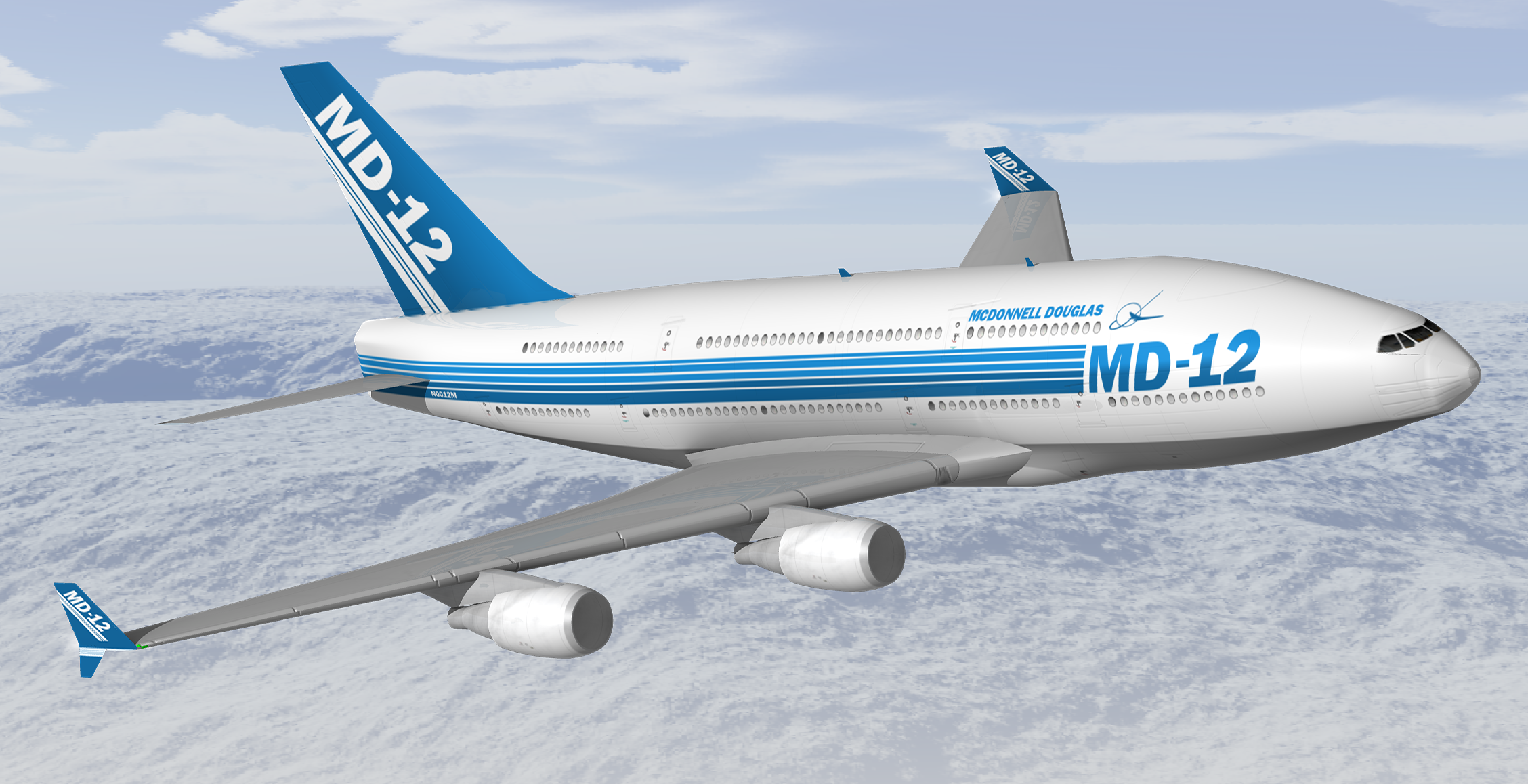In the 1990s, McDonnell Douglas sought to challenge the dominance of the Boeing 747 on international routes. Responding to a distinct air travel landscape, the company designed the MD-12, a double-decker aircraft boasting significant passenger capacity and long-range capabilities.
This design decision stemmed from the specific market conditions of the era. Lower fuel costs and declining airfares fueled airline competition to offer even more affordable long-haul flights. Additionally, the Soviet Union’s collapse opened new routes across the North Pole and deeper into Asia, further driving demand for aircraft capable of traversing these extended distances.
Join us on TELEGRAM for the Latest Aviation Updates fresh to your phone.

Airlines, therefore, sought an aircraft with three key characteristics:
- High passenger capacity exceeding 300 passengers
- Long-range flight capabilities
- Substantial size to enhance airline prestige
The Boeing 747, with its four engines and unmatched passenger capacity, dominated long-haul routes in the 1990s. Recognizing this dominance, McDonnell Douglas, sought to develop a competing aircraft with similar capabilities.
Initial design efforts focused on a stretched version of the MD-11, offering only minor improvements. However, to truly challenge the 747’s market position, McDonnell Douglas recognized the need for a more significant innovation: a double-decker design. The initial iteration of this stretched MD-11 featured a lower deck with forward-facing panoramic windows.
The McDonnell Douglas board of directors approved the MD-12 development costs in early winter 1991. Project estimates indicated a budget of approximately $4 billion USD for development and construction of a prototype.
To mitigate financial risk, McDonnell Douglas sought external partners. A limited partnership was formed, with Taiwan Aerospace acquiring a 40% stake and other Asian companies contributing an additional 9%. McDonnell Douglas retained a 51% ownership share.
So, What happened?
Despite initial fanfare and media attention upon its launch in April 1992, the MD-12 project ultimately failed to secure firm orders from airlines. Although McDonnell Douglas anticipated a first prototype by 1995 and a maiden flight by 1997, the project lacked concrete commitments.
The lack of airline interest ultimately jeopardized the project’s viability. Taiwan Aerospace’s withdrawal from the partnership further compounded the financial burden, effectively leading to the MD-12’s demise.
In retrospect, the project’s failure has been attributed to McDonnell Douglas’s limited internal resources, potentially exceeding their capacity to manage the technically demanding and financially strenuous endeavor. Some industry experts have even speculated that the project may have been strategically designed to pressure Boeing into a more lucrative acquisition of the company, which occurred a few years later.
Following the project’s cancellation, elements of the MD-12 design were repurposed for a new tri-jet concept, the MD-XX, unveiled at the 1996 Farnborough International Air Show. However, this iteration also met with an unsuccessful fate.
Boeing 747-400 Vs. MD-12

A direct comparison between the MD-12 and its primary competitor, the Boeing 747-400, reveals a clear focus on exceeding the latter’s capabilities.
The 747-400 boasted a three-class passenger capacity of 416 individuals with a range of 7,670 nautical miles (14,200 kilometers). In contrast, the MD-12 aimed for a long-haul configuration of 430 passengers in a three-class layout, with an even higher capacity of 511 passengers in an all-economy configuration. Its projected range was 7,170 nautical miles (9,200 miles, 14,825 kilometers).
While boasting superior capacity and range capabilities to the Boeing 747-400, the MD-12 remained commercially inviable due to the economic climate of the time. Airbus would eventually succeed in capturing the double-decker, high-capacity market with the A380, leaving aviation enthusiasts to ponder the ‘what if’ scenario surrounding the MD-12.
Would you have flown on the MD-12? Share your thoughts in the comments below.
Youssef Yahya is the CEO and Founder of Aviation for Aviators. He also serves as the Chief-in-Editor of the platform’s website, where he shares his passion for aviation and provides valuable resources for aviation enthusiasts and professionals alike. His love for aviation and entrepreneurial spirit drive him to create innovative solutions, making Aviation for Aviators a unique resource in the aviation sector.
You might also like:
- The 747 that carried America’s space dreams
- The Best Airlines of 2021
- Measures of Best Airlines in 2021
- Air India Places Order for 85 Airbus Aircraft
- SCAT Airlines Orders Seven 737 MAX Jets at Dubai Airshow 2023
Discover more from Aviation for Aviators
Subscribe to get the latest posts sent to your email.

